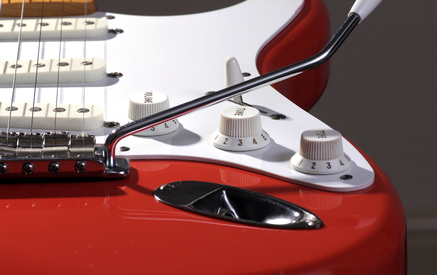How To Repair Common Types Of Guitar Body Damage

As guitarists, we all cherish our instruments, but wear and tear are inevitable over time. The guitar’s body, being its most visible and tactile part, is particularly susceptible to damage. While some wear adds character, significant damage can affect the instrument’s playability and aesthetics. In this blog post, we will explore common types of guitar body damage and provide step-by-step instructions on how to repair them, ensuring your beloved guitar remains in top-notch condition.
Dents and Dings
One of the most common types of guitar body damage is dents and dings. These minor imperfections can occur from accidental knocks or bumps. To repair them, you’ll need to follow these simple steps:
- Assess the Damage
Inspect the dent or ding carefully. If it’s shallow and hasn’t caused any cracks or finish damage, it’s relatively easy to fix.
- Damp Cloth and Iron
Place a damp cloth over the affected area and use a clothes iron set to low heat. Gently press the iron over the cloth, being cautious not to scorch the guitar’s finish. The steam generated will cause the wood to swell, reducing the dent’s appearance. - Sanding
Once the area is dry, use fine-grit sandpaper to smooth out the surface. Sand with a circular motion, blending the repaired area with the surrounding finish. Be patient and gentle to avoid causing further damage.
Scratches and Scuffs
Scratches and scuffs are another common eyesore on guitar bodies, especially for players who gig frequently. Here’s how to address them:
- Clean the Area
Before attempting any repair, clean the scratched area thoroughly with a damp cloth and mild soap. This ensures you’re working on a clean surface, free from dust or debris.
- Filling the Scratch
For minor scratches, you can use a bit of toothpaste or automotive scratch remover. Apply a small amount and rub it gently over the scratch using a soft cloth in a circular motion. Wipe off the excess and check the results. - Touch-up Paint or Polish
For deeper scratches, touch-up paint that matches your guitar’s finish can work wonders. Apply it carefully to the scratched area using a small brush, following the direction of the grain. Allow it to dry and then gently buff the area with a soft cloth to blend the repair seamlessly.
Strap Button Repair
Repairing loose strap buttons is a common issue that guitarists often encounter. Over time, these buttons can become loose and even come off entirely, compromising the stability of your guitar’s strap. First, carefully remove the loose strap button and its screw. Inspect the hole and the screw to ensure they are not damaged. You may need to find a replacement, buying screws is easier online and often more cost-effective. If they appear to be in good condition, apply a small amount of wood glue to the hole before reinserting the screw. Make sure not to over-tighten the screw, as it could cause the wood to crack or strip the threads. To prevent any damage to your guitar’s finish and hardware, always use an appropriate screwdriver that matches the screw head precisely.
Finish Cracks
Finish cracks can be more challenging to repair, but with patience, you can restore your guitar’s appearance.
- Assess the Severity
Inspect the crack to determine if it’s solely in the finish or if it extends into the wood. Superficial cracks can be fixed more easily, while deeper ones may require professional attention.
- Fill the Crack
For finish cracks, apply a small amount of clear epoxy or wood filler that matches the colour of your guitar’s finish. Carefully push the filler into the crack using a thin tool like a toothpick or a credit card. Wipe off any excess before it dries. - Sand and Buff
Once the filler is dry, use fine-grit sandpaper to level the repaired area with the rest of the finish. Finally, buff the area to a smooth shine, blending it seamlessly with the surrounding finish.




